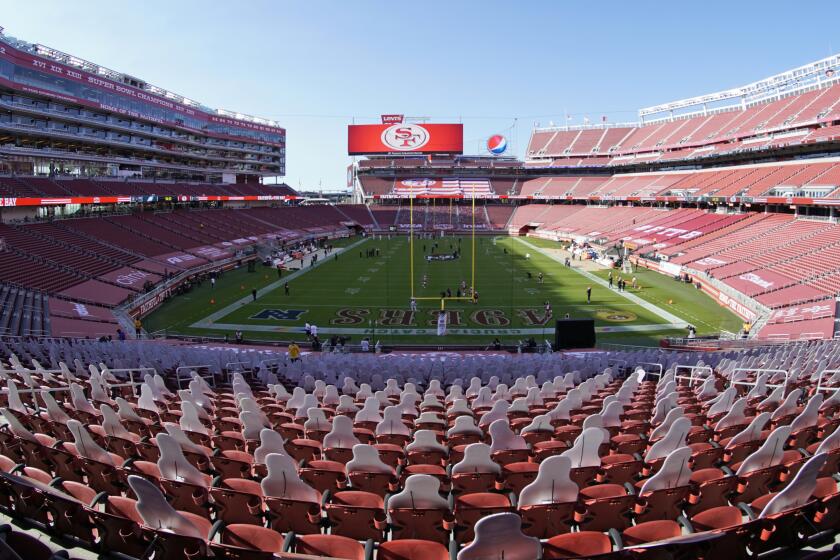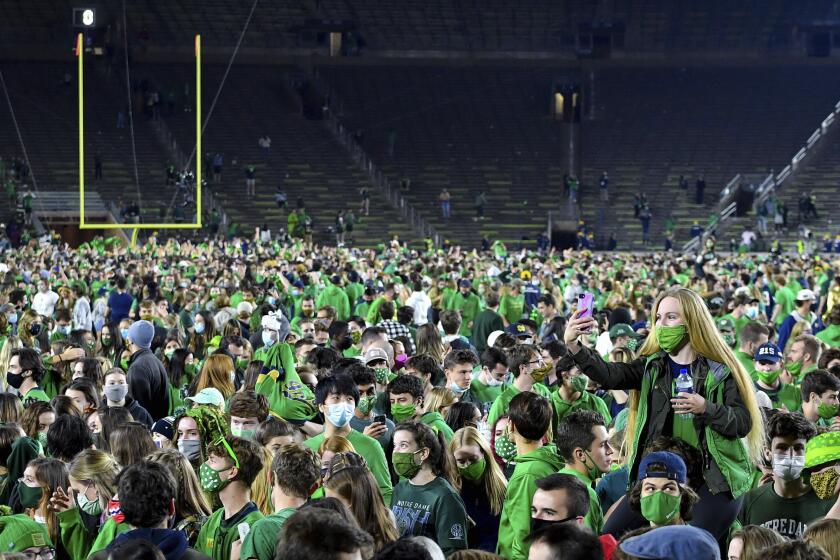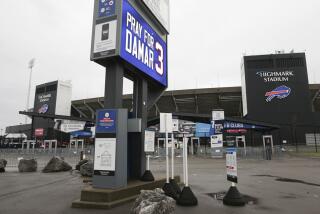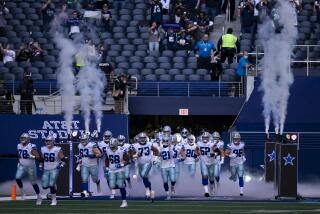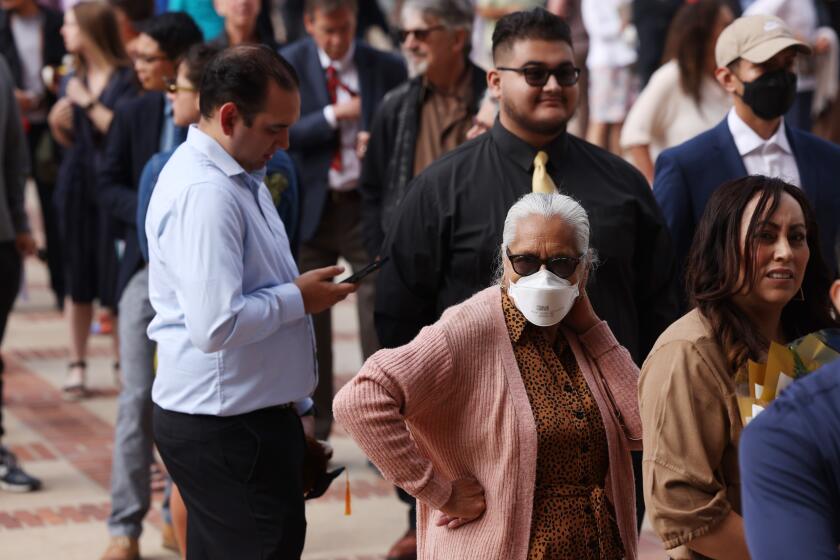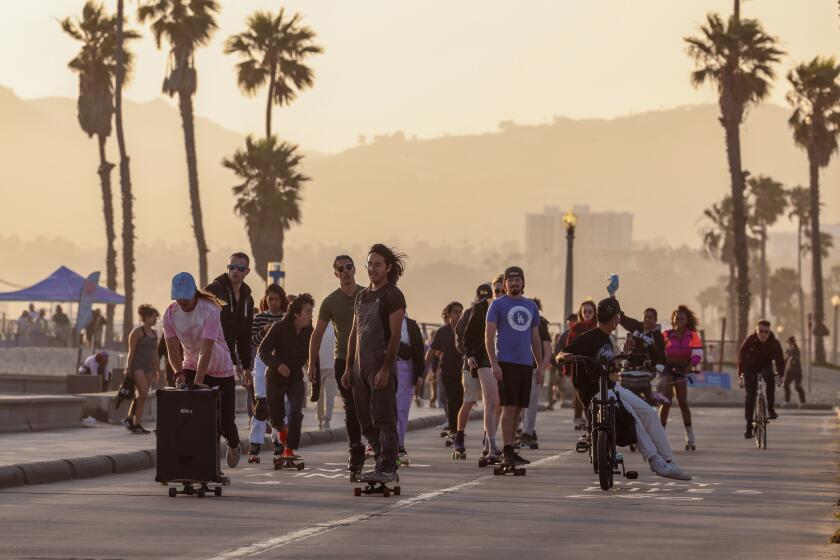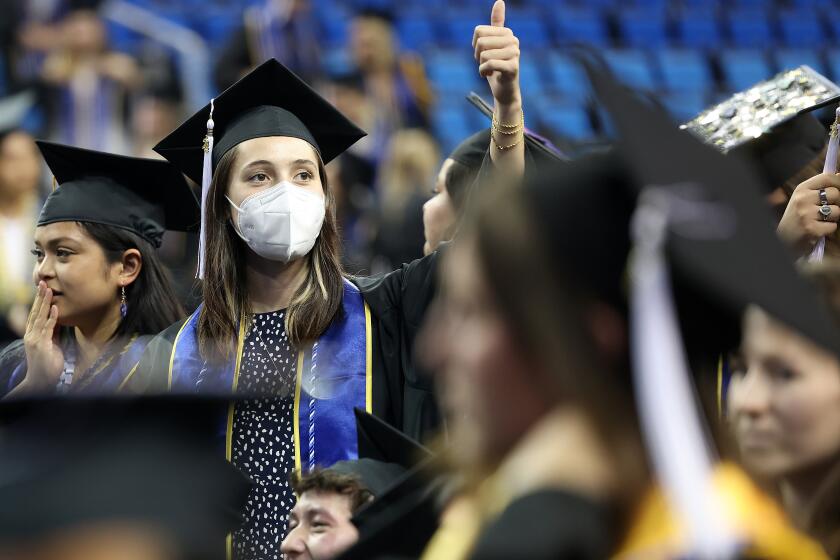No bubble means no assurances NFL and college football schedules aren’t disrupted
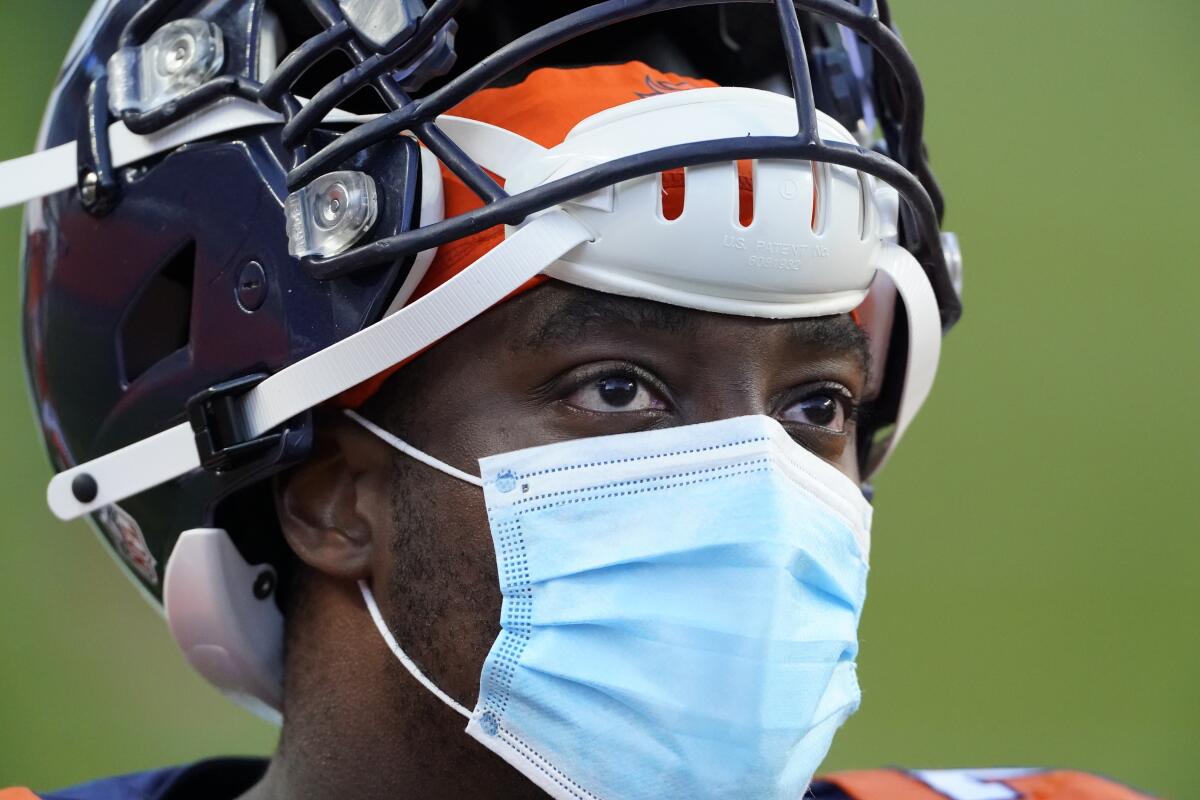
There wasn’t much Vic Fangio could say. The Denver Broncos coach had just watched his team lose an NFL game with all of its quarterbacks sidelined by COVID-19 protocols. A practice-squad receiver forced to play behind center had finished with one pass completion and two interceptions.
“Extreme circumstances that have never been seen before,” Fangio said.
The novel coronavirus outbreak has turned this football season into an oddity of historic proportions, each week bringing something unexpected if not unprecedented, whether it’s a pro game switched to a weekday afternoon or outbreaks forcing a major college conference to shutter more than half its Saturday schedule.
There is, however, one group of people who aren’t surprised. Epidemiologists and public health officials saw trouble coming when football, unlike basketball or hockey, chose not to sequester teams in a central location.
“You don’t have a true bubble — they’re not even trying,” said Anne Rimoin, an epidemiology professor at UCLA. “The safety of the sport is totally dependent on community transmission.”
“Football is a contact sport, up close. We’re slobbering, spitting and bleeding on each other.”
— Rams defensive lineman Aaron Donald
This vulnerability is now growing with each day as the U.S. sets new records for cases, hospitalizations and deaths. While league and conference officials scramble to get through the season, the prognosis for a bleak December has health officials pondering weighty questions.
At its lowest common denominator, life during a pandemic is a series of risk-reward choices. Every trip to the supermarket, each casual chat with a neighbor in the front yard, involves the weighing of potential consequences. It is no different in football, with big money and athletes’ health at stake.
At the University of Washington, one of the national leaders in studying the pandemic, assistant epidemiology professor Jen Balkus, is a sports fan who appreciates that weekend games can offer distraction and a few hours of normality.
“But I go back and forth on this,” Balkus said. “In a moment when so many are choosing to or being forced to make massive sacrifices, when there are people who can’t stay at home and have to go to work, sports feel like a luxury.”
::
Aaron Donald understood the situation from the start. He knew there would be no social distancing, no mask wearing, once he stepped on the field.
“Football is a contact sport, up close,” the Rams All-Pro defensive lineman told reporters during a preseason videoconference. “We’re slobbering, spitting and bleeding on each other.”
Football executives and college administrators acknowledge the limitation of their protocols. Each night, players leave the team, re-entering the public space where they are potentially exposed to community transmission. Each morning, they return to a job that, as Donald pointed out, involves repeated physical contact with 50 to 100 colleagues.
Frequent testing should not be confused with prevention. Think of the cliché about defending against a star opponent: Football teams aren’t trying to stop the coronavirus, they only hope to contain it.
The San Francisco 49ers might have to find a new temporary home amid Santa Clara County banning all contact sports for the next three weeks.
“We often say, ‘We can’t test our way to safety,’” Dr. Allen Sills, the league’s chief medical officer, told reporters. “What we mean is, the idea that we’re going to test everyone and everyone is going to be negative, then we can sort of go about football and business as usual, that is flawed thinking.”
College football never had the option of a bubble, not with so many teams at the Division I level. Its path is especially treacherous, relying on 18- and 19-year-olds to behave responsibly during off-hours.
“It’s a difficult circumstance,” Southeastern Conference Commissioner Greg Sankey said after outbreaks forced him to postpone four of seven games on a recent weekend. “No way to paint it otherwise.”
Data analysis published by USA Today shows that counties in which Power Five conference schools are located have experienced larger-than-normal COVID-19 spikes nationwide. Placing aside questions of cause-and-effect — Do campuses fuel community outbreaks? — the trend has put players and staff at greater risk.
Teams at the pro and college levels might also see more cases because of traveling and staying in hotels. Stadiums often have small, cramped locker rooms for the visiting squad.
“Positive tests are ramping up,” said Geoffrey Dreher, an assistant professor of orthopedic surgery and team physician at Johns Hopkins University. “Is it getting out of our control?”
Coronavirus fatigue might play a role. In Denver, the Broncos ran into trouble because their quarterbacks attended a position-group meeting without masks. When one of them tested positive, all were quarantined.
The Baltimore Ravens had their game against the Pittsburgh Steelers postponed until Wednesday afternoon, placing numerous starters on the reserve/COVID-19 list, after a strength and conditioning coach failed to report symptoms and did not consistently wear a mask.
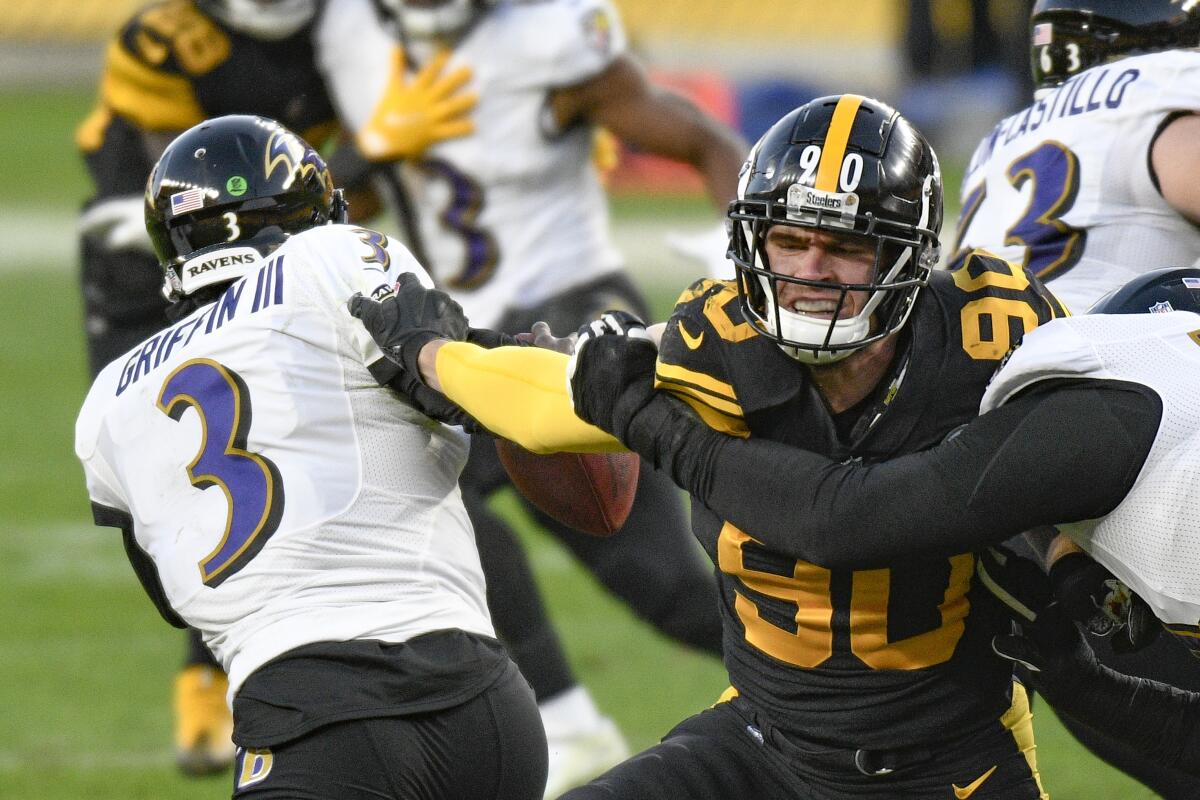
But the University of Minnesota Gophers insisted they had done nothing wrong as their team got hit with 47 positive cases over the past few weeks, forcing them to cancel two consecutive games.
“The virus remains undefeated,” Coach P.J. Fleck mused during a weekly radio appearance on KFAN-FM. “We are in a major city, surrounded by a lot of people.”
::
Several weeks have passed since thousands of Notre Dame students rushed onto the field after their team defeated top-ranked Clemson in double-overtime. The scene, broadcast on national television, became a lightning rod for concerns about football and the coronavirus.
“I can understand why people would be upset,” said Brandon Hardy, among the crowd that night. “It was one of those things where you make a decision in the moment.”
University and county officials have conducted widespread testing and tracing since then, worried that the celebration might trigger an outbreak. They have discovered something unexpected.
Notre Dame reported about 160 new cases the following week, a slight bump but nothing to suggest widespread infection. Administrators say all students at the game were tested before receiving tickets and most wore masks at the stadium.
A massive celebration after the Notre Dame-Clemson game was a potential super-spreader event, but experts say it could shed light on the coronavirus.
“We think the source was a block party before the game which was high-risk,” university spokesman Paul Browne said. “It went for an extended period of time and there were no masks.”
The numbers for the surrounding community tell a parallel story, with the rolling seven-day average for St. Joseph County jumping from 218 cases a day to 300. Six days after the game, the county set a record for single-day cases at 469.
“I suspect a lot of people were watching the game at restaurants and bars and in other peoples’ homes,” deputy health officer Mark Fox said. “While we cannot demonstrate anything conclusively, I fully believe there was some impact from having a game of that magnitude here.”
Football has long been a reason for friends to gather, spending hours in close quarters, cheering and often drinking alcohol. In a pandemic, these innocuous social conventions qualify as dangerous behavior.
“We have to rethink everything we do,” said Rimoin of UCLA, who watched Notre Dame play Clemson on television. “The epidemiological landscape is changing.”
“This just should not be surprising to anybody. Nothing in football is happening in a vacuum.”
— Anne Rimoin, an epidemiology professor at UCLA
Championship runs by the Lakers and Dodgers might have contributed to coronavirus infection rates, Los Angeles County health officials say. Football is considered riskier if only because it is played in the fall and winter, when people spend more time indoors and transmission is more prevalent.
::
The San Francisco 49ers had just kicked a last-second field goal to defeat the Rams at SoFi Stadium — a big divisional win on the road — but their coach could not help shaking his head.
Santa Clara County, where the team practices and plays home games, had issued new coronavirus restrictions the previous day. With COVID-19 cases and hospitalizations on the rise, officials had temporarily banned recreational activities involving “physical contact or close proximity,” a directive that included pro football.
The 49ers would have to find a new home.
In a videoconference with reporters, coach Kyle Shanahan could not hide his frustration as he talked about how hard his players and staff had worked to limit COVID-19 outbreaks.
“All we’ve done this entire season is wake up in the morning, go get tested, wear a mask and trackers throughout the whole day, finish, go straight home,” he said. “I mean, everyone has been so committed to this.”
The 49ers will practice and play their next two home games in Phoenix where, ironically, Arizona is experiencing a coronavirus surge of its own. The Stanford football team also must spend two weeks on the road, in Washington and then Oregon.
“This just should not be surprising to anybody,” Rimoin said. “Nothing in football is happening in a vacuum.”
The UCLA professor insists that canceling games, juggling schedules and determining playoff qualifiers are only a small part of the equation. Researchers have yet to determine the extent of COVID-19’s long-term health effects, especially among young people.
“The evidence is mounting,” she said. “Is it worth the risk?”
Eight college games were canceled or postponed this weekend. With more than a month remaining in the NFL season, a month that could see tens of thousands die nationwide, Shanahan seems to appreciate that his sport has put itself in a difficult spot.
“We understand how big a deal this virus is,” he said, adding: “We have to deal with it.”
More to Read
Get our high school sports newsletter
Prep Rally is devoted to the SoCal high school sports experience, bringing you scores, stories and a behind-the-scenes look at what makes prep sports so popular.
You may occasionally receive promotional content from the Los Angeles Times.

